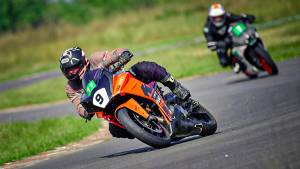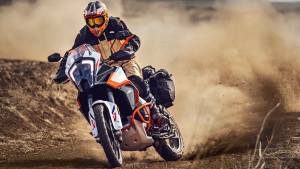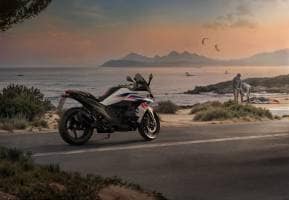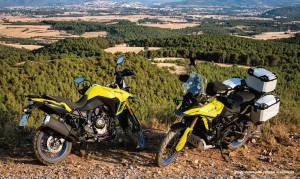Is the KTM 390 Duke the best among equals, at least on paper?
Our first ride of the KTM 390 Duke confirmed what the specs had been telling us. But just the specsheet doesn't tell the whole story. We take a look at the finer points of how the newest Duke compares with the competition from across the world.
Engine
The engine is the most high-buzz part of the KTM 390 Duke's coverage for two easy-to-grasp reasons. First, it is the most significant upgrade over the Duke 200. The rest of the cycle parts are more or less the same. Second, because of the displacement KTM and Bajaj selected for it, there really isn't anything in market that really comes anywhere close to the new KTM 390 Duke.
.jpg) 2013 KTM 390 Duke
2013 KTM 390 Duke
If you are looking for areas where the KTM engine isn't exceptional, there is the matter of specific output, or PS/litre, which is a good indicator of the level of performance of an internal combustion engine.
For instance, the Ninja 250R and the 300 produce 132.5 and 131.3 PS/litre. Yes, the 300 makes less power per litre if you remember as Kawasaki grew the engine in displacement and harvested more power and torque from it, they also lowered the compression ratio, and all that adds up to a lower specific output.
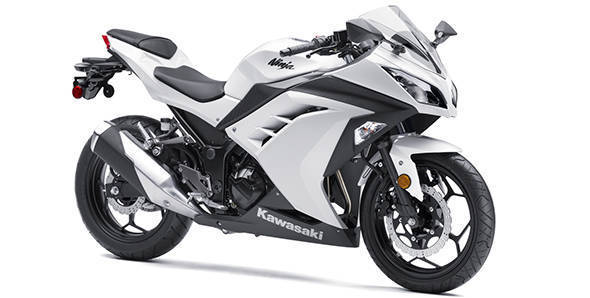 Kawasaki Ninja 300
Kawasaki Ninja 300
As in given the same displacement, the Ninja 300's engine configuration would produce slightly less power than the 250R's. Don't forget the you can compress the heck out of an internal combustion engine but it isn't an infinitely rewarding process.
Higher compression brings sensitivity to fuel quality. It means you have to upgrade metals and manufacturing processes. It means the engine will make more heat as a by-product. It means the engine will require far, far more work to keep cool enough to operate in a stable form and so on and so forth.
Sportbikes under 400cc
| Motorcycle | Honda CBR250R ABS |
| Displacement | 249.6cc |
| Max power | 25.3PS@8500rpm |
| Max torque | 22.9NM@7000rpm |
| ABS | Y |
| Kerb weight | 167kg |
| Power to weight ratio | 151.5PS/ton |
| 0-100kmph | 9.23s |
| Top speed | 146.82kmph |
| Price ex-Mumbai | Rs 1,96,000 |
| Motorcycle | Hyosung GT 250R |
| Displacement | 249cc |
| Max power | 28.5@10,500rpm |
| Max torque | 22Nm@8000rpm |
| ABS | N |
| Kerb weight | 188kg |
| Power to weight ratio | 151.6PS/ton |
| 0-100kmph | 10.21s |
| Top speed | 146.25kmph |
| Price ex-Mumbai | Rs 2,90,000 |
| Motorcycle | Kawasaki Ninja 300R |
| Displacement | 297cc |
| Max power | 39PS@11000rpm |
| Max torque | 27NM@10000rpm |
| ABS | N |
| Kerb weight | 172kg |
| Power to weight ratio | 226.7PS/ton |
| 0-100kmph | 7.26s |
| Top speed | 162kmph |
| Price ex-Mumbai | Rs 3,50,000 |
| Motorcycle | KTM 390 Duke |
| Displacement | 373cc |
| Max power | 43.5PS@10,000rpm |
| Max torque | 36Nm@8000rpm |
| ABS | Y |
| Kerb weight | 139kg |
| Power to weight ratio | 300PS/ton |
| 0-100kmph | 5.5-6s estd |
| Top speed | 160-170kmph estd |
| Price ex-Mumbai | Rs 1,87,000 |
So where is the 390 on specific output? The KTM 390 makes 118PS/litre, a little less than the 125PS/litre of the 200. Are you surprised? I am not. Engines with higher specific outputs feel more stressed even if they don't have vibration or harshness. The KTM 390 Duke felt a lot more composed at say, 8,000rpm than the Duke 200 in terms of how stressed the engine sounds or feels at that speed. The lower specific output confirms the sense you get that the 390 engine has to work less hard than the 200 engine to make its power and torque. Obviously this is a sensation because for the same revs, the 200 always makes less torque or power than the bigger engine.
So how come the Ninjas don't feel still more stressed? That's the beauty of having more than one cylinder. The formula for indicated power (a theoretical calculation that indicates engine power without friction losses in the drivetrain) includes number of cylinder as a multiplying figure. As in, all else remaining equal, adding cylinders is good for power you can get more specific output while, effectively, reducing the stress by sharing it across the cylinders. That is how the Ninja 300, which has a 75-odd cc displacement disadvantage, is only 10.6:1 in compression terms and still manages to make just 5PS less than the KTM 390's bigger engine.
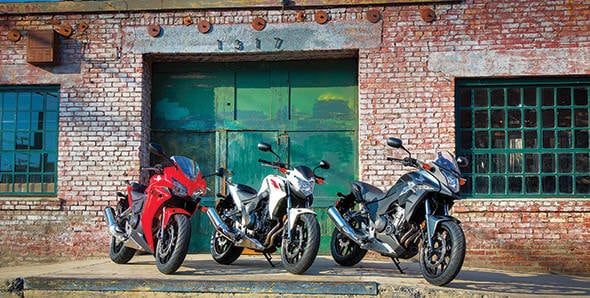 The Honda CBR500 family
The Honda CBR500 family
Then comes the question of the rest of the crew. The Royal Enfield Classic is at 54.5PS/litre while the CBR250R is at 101.4 and just for comparison's sake, the Honda CBR500R would be at roughly 106.2 (compression 10.7:1). The pattern here is that KTM is extracting more power from their engines than anyone else here. And that explains the lead in power figures.
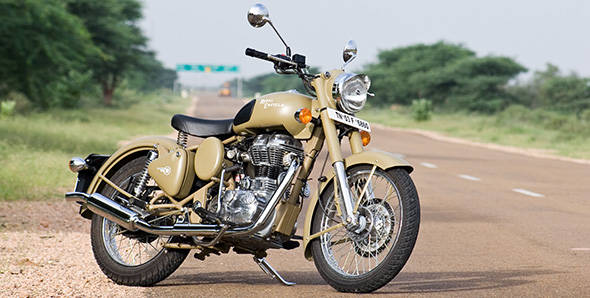 Royal Enfield Classic Desert Storm
Royal Enfield Classic Desert Storm
Another interesting thing emerges if you look at the bore and stroke figures. As a thumb rule, long strokes give more torque and wide bores give more revs (equals more power, roughly). From this perspective, the Honda CBR500R is nearly square (bore and stroke are nearly identical 67mm and 66.8mm). The Royal Enfield is the other side of the scale, the engine uses a 84mm wide bore but a 90mm stroke. This is a style of engine that is rarely used on current machinery. All of the other bikes here are oversquare (use wider bores).
So which engines are most oversquare? The Ninja 250R has a ratio of 1.5:1 bore to stroke is the most oversquare (that is how you get high compression, 14,000rpm and sweet top-end punch). The two KTMs are both roughly 1:47-48:1. As in the bore is nearly one and half times as wide as the stroke is long. In fact, it might be the combination of high piston speeds and the high compression ratio plus the actual size of the piston in the 390 (89mm) that leads to it being the only forged piston in this spec sheet.
Overall, the spec sheet in terms of engines is a clear indicator that KTM are up their usual tricks make lots of power, take no prisoners. However, the surprise is that the 390 is also claimed to have nearly the same economy as the 200. And we know that the 200 can be quite frugal if you ride it gently.
Mass and motion
Gearing aside, the biggest influencer of how performance arrives on the ground is the weight in terms of design. And if you look for the lightest bike here in kerb weight terms (as in fully fueled, oiled, ready to ride), the 'winner' is the KTM 200 Duke. Next up, is the 390 Duke. All of the other bikes are 166kg or higher.
What this means is that the Duke 390 engine has to push much less weight through air and over ground than for instance the 50PS Honda CBR500R (193kg!). Weight also costs you in economy and the light weight of the two Dukes is perhaps one of the reasons for their economy. More importantly for the enthusiast, it means the rate of acceleration and top speeds can be higher. We say higher rather than high because gearing can change that.
The 200 Duke is a great example of this. KTM could easily have geared this motorcycle to run to, say, 150kmph. All it would need is a tall sixth gear to be honest. But it would also make sixth impossible to use in the city, for instance. The 390 uses a sixth that does exactly that you never hit redline in top gear, and the claimed top speed is 160kmph.
But that means 160kmph is the highest the engine can push the KTM in its test configuration (whatever fuel load, oil load and rider weight plus aerodynamic configuration it was), officially. Dani Pedrosa or you neighbourhood equivalent could use a different configuration (less fuel, smaller rider, more aerodynamic riding position) to achieve a higher result.
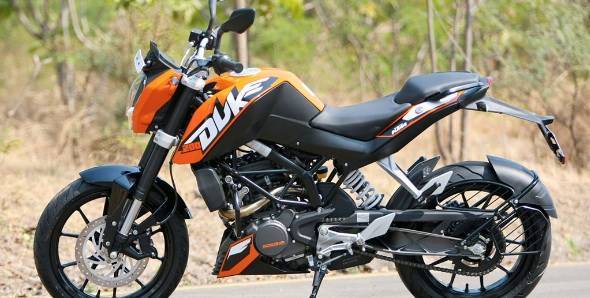 KTM 200 Duke
KTM 200 Duke
This advantage, if you would like to think of it that way, accrues to all motorcycles that do not max out in top gear. The exception, clearly, is the KTM 200 Duke which was designed to be an effective city bike and its gearing was lowered so that it maxes out at redline in sixth (as in if you don't mind potential engine damage, the bike could probably go a bit faster if you took the redline off).
Displacement
Without going into the details of chassis and cycle parts, it is clear that the KTM 390 Duke's biggest advantage is its displacement. And KTM and Bajaj R&D have not relied on displacement alone to press home the advantage. From high-end equipment like the forged pistons to the clever selection of compression, gearing and so forth, the KTM 390's out of the ordinary numbers are designed to be just that. At the moment, this crowd, potentially even the Honda CBR500R doesn't have a straight answer to it.
Pricing
But the final gong is really a traditional Bajaj strength - pricing. Bajaj have not only placed the KTM 390 Duke in spec and performance terms in untouched ground, but it has backed this up with a price that will be extremely hard for the competition to match up to.
 Honda CBR250R
Honda CBR250R
Think about it as a manufacturer. If you were, say, making a CBR250R competitor at a price just below the Honda and then decided to make a competitor to the Duke 390, how would you manage a bike with nearly twice the power and 50 per cent more torque at just Rs 30,000 more? However, an unbridled search for horsepower doesn't always produce great bikes. That is the proviso. Else, we would all be riding race bikes. Some of the people who spoke to OVERDRIVE after the 200 Duke was launched ended up buying Honda CBR250Rs because despite the exuberance in the spec sheet at the time, when they rode the 200 out on the street, they found it too highly strung.
Let us imagine that you're in a town under zombie attack and you have yourself a machine gun with a sensitive trigger. That is a good thing right? How about if the machine gun proved to be so sensitive that every time you move your arm it fired off a round or two. Then it wouldn't be such a great thing, right?
Moving beyond specs
That is the thing about the 200. It is a great little motorcycle but it is also highly strung, unrelenting and busy. And not everyone wants to ride like that. And no spec sheet will tell you that either. Honda never like these kind of products so all of their bikes, for example, Fireblade included, are, relatively speaking, calmer in nature, the nature of the power is sweeter and the bikes are, in that sense, more approachable and more forgiving.
In fact, a lot of evidence, including the difference between Rossi's M1 and the Yamaha M1 before Rossi came over, suggests that good riders use more of the ability of the motorcycle when the motorcycle itself is easy to get along with. Read the reports of Rossi's M1 as ridden by journalists for various magazines abroad and all noticed the extraordinary amount of power and also the sweetness with which it was delivered. Which is to say that a high power output alone does not make a great bike, there is more to it than that.
So before KTM fans go out and celebrate a victory and other bike fans shake their heads in frustration, please remember all this is just mathematics and logic so far.
The real world is more than that. Chances are the KTM will demolish any challenge presented before it in the near future. But in the real world, in the motorcycle world, heart and emotion have a lot to say rather just maths and the brain.
And there is no spec sheet for that.
